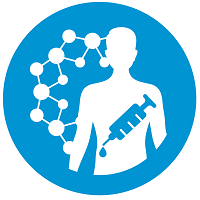Preclinical, Clinical, and Translational Sciences
Advancing Physiologically Based Pharmacokinetic (PBPK) Modeling for Dermal and Ocular Drug Development
.png)
-

Bryan Holland, PhD
Senior Research Scientist
Certara
Sheffield, England, United Kingdom -

Daniel Paterson, PhD (he/him/his)
Research Scientist II
Certara
Sheffield, England, United Kingdom
Chalk Talk Presenter(s)
Description: Physiologically based pharmacokinetic (PBPK) modeling provides a mechanistic framework to address key questions throughout drug development while reducing reliance on extensive in vivo or even animal studies. PBPK modeling is particularly valuable for dermal and ocular delivery routes of administration. These applications involve unique physiological barriers, exposure considerations, and complex formulation-dependent processes that benefit from a mechanistic approach.
This presentation highlights two PBPK models:
1. A mechanistic dermal absorption model that enables a bottom-up approach for dermal absorption to predict local and systemic compound exposures. The model supports in vitro in vivo extrapolation (IVIVE), informs experimental design, and incorporates dynamic re-parameterization of formulation characteristics to capture metamorphic processes critical for topical products.
2. A mechanistic ocular model developed to addresses challenges in predicting drug disposition in the eye, where diseases such as glaucoma and macular degeneration, as well as off-target toxic effects of systemic therapeutics, demand precise assessment of exposure within the different parts of the eye. To simulate the particular complexities of the eye, the model integrates finite element methods, anterior chamber convection, melanin binding, and intravitreal injection geometries. Here we provide verification studies against rabbit and human data for topical, intravitreal, oral, and IV administration routes that demonstrate its utility in supporting ocular drug development.
Learning Objectives:
- Understand how a mechanistic dermal absorption model can complement dermal model development and inform in vitro experimental design, and be used to optimize and mimic in vivo clinical trials with pharmacokinetic endpoints, including Virtual Bioequivalence (VBE) analysis.
- Gain a general understanding of and the need for PBPK modeling with ocular drugs, and for off-target and toxicology studies.
- Understand how different administration routes, both ocular (topical and intravitreal) and systemic (oral and IV), can be used to study drug exposure within ocular tissues.


